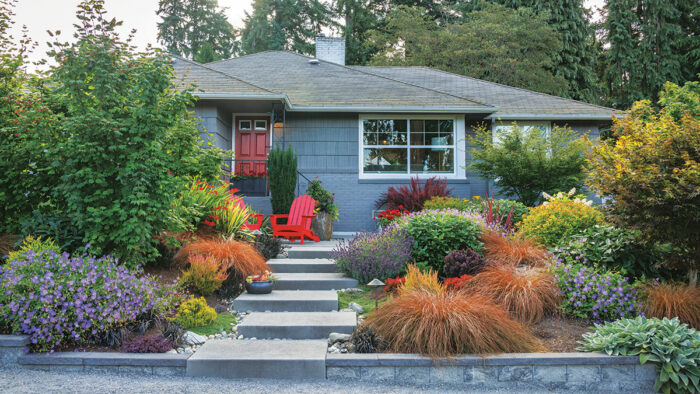
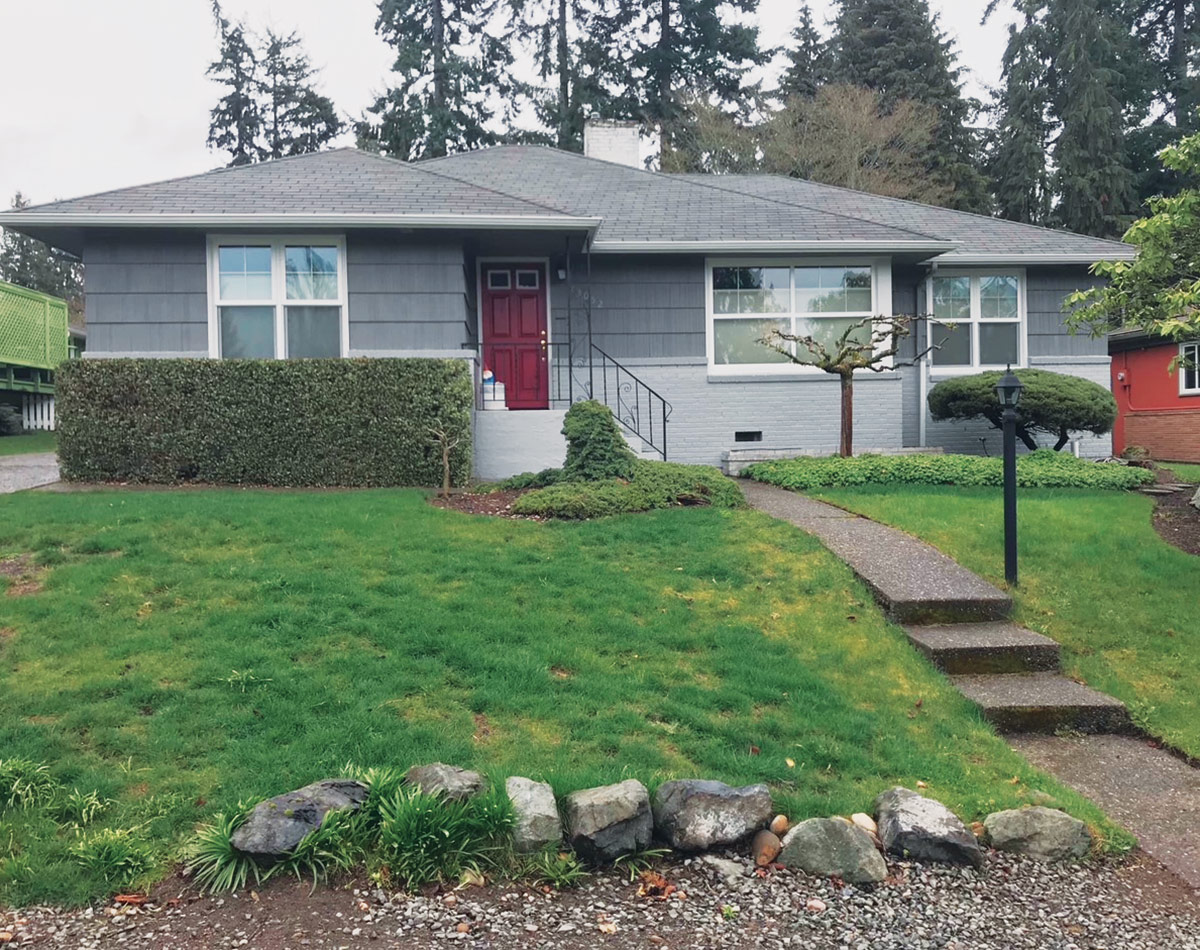
From New York City to Chicago to Seattle, you’ll find them—urban cookie-cutter neighborhoods. With the boom of affordable housing in the 1950s postwar era, these practical tract-built homes became an iconic sight across the American landscape. They have identical floor plans, facades, and, originally, manicured lawns in the front and back. Many of these homes have withstood the test of time and still deliver on affordability, charm, and prime city-life locations.
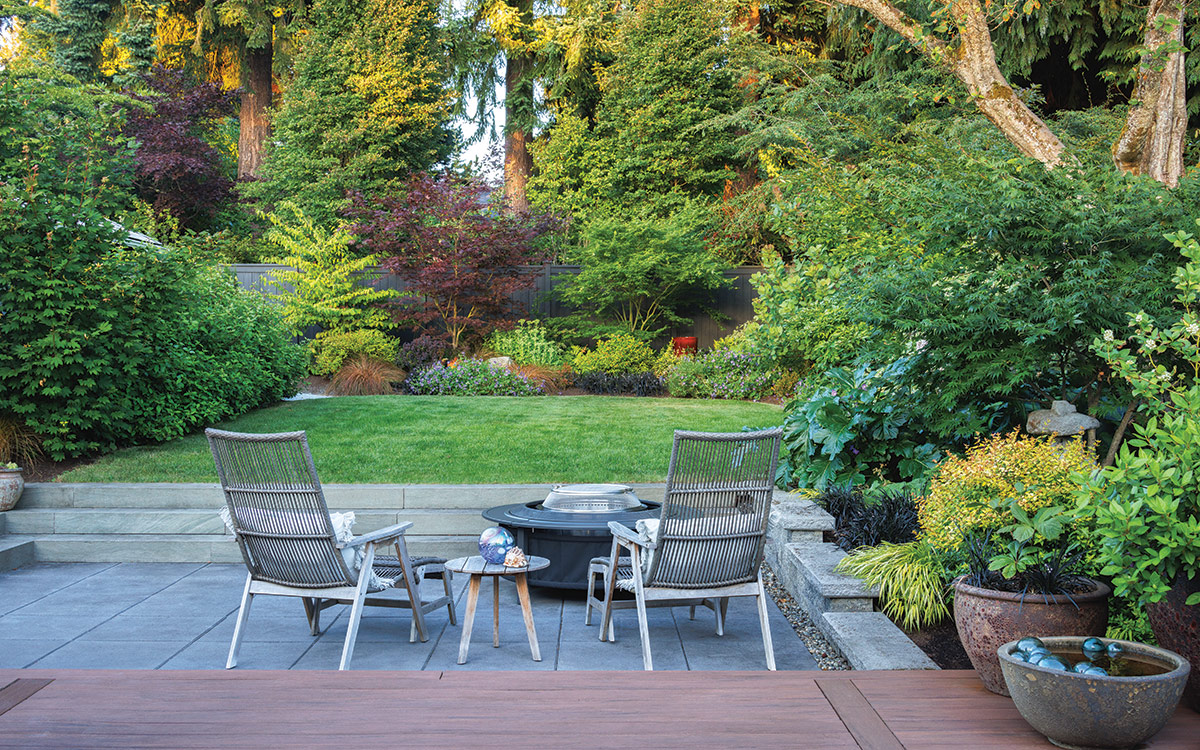
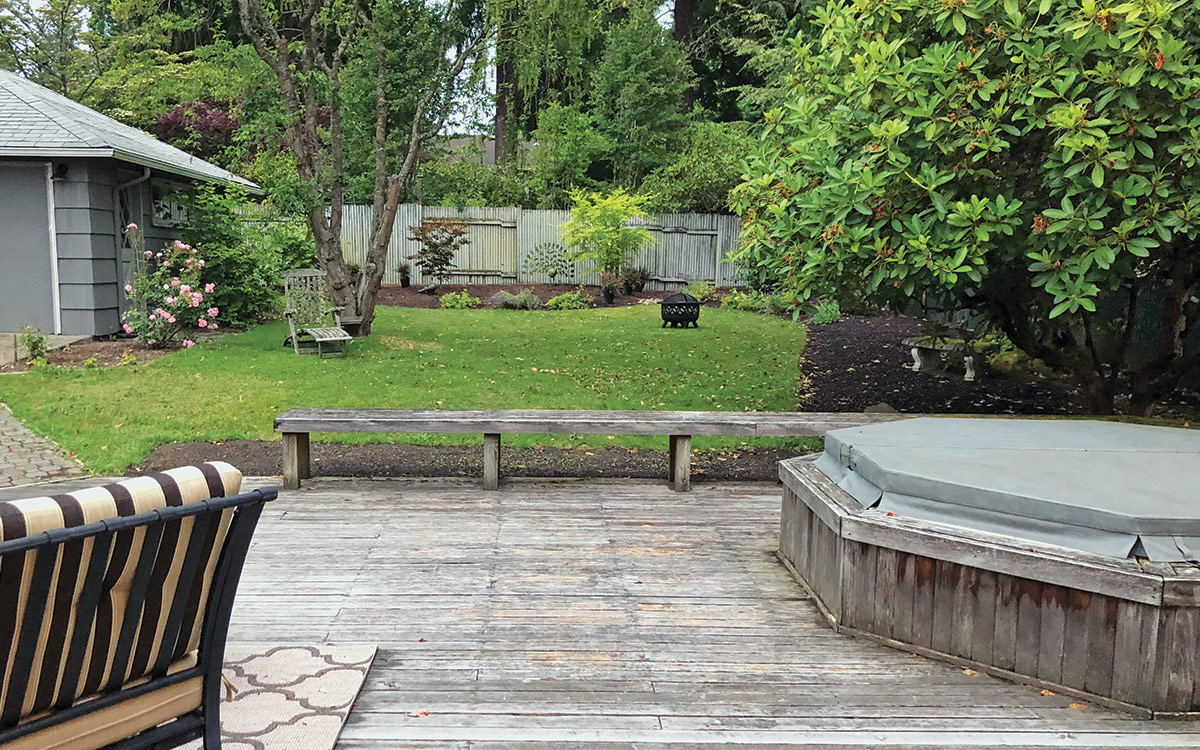
But the cookie-cutter landscape is no longer cutting it. Maintaining sizable expanses of lawn is not only taxing on the environment, it’s also a missed opportunity to improve your home life with outdoor living spaces for dining, entertaining, relaxing, and nurturing beneficial plants. I recently faced a cookie-cutter challenge. The client had a traditional front and backyard but wanted a space with better curb appeal and greater opportunities for enjoying the outside. And, thanks to a detailed landscape-renovation plan, that is exactly what she got.
Key elements of the front
What: Cookie-cutter, urban property
Where: Seattle, Washington
Zone: 7b
Size: 1/8 acre
Conditions: Full sun; gravelly, amended, well-drained soil
- Sloped garden
- Poured concrete steps
- Sunset terrace
- House (front entry)
- Bird-friendly side garden
Key elements of the back
What: Cookie-cutter, urban property
Where: Seattle, Washington
Zone: 7b
Size: 1/4 acre
Conditions: Full sun to partial shade; amended, well-drained soil
- Main deck
- Firepit patio
- Bluestone steps
- Property line fencing
- House (rear exit)
- Frosted privacy panel fence
Map out your wish list and outdoor living areas
Although I’m technically a landscape designer, I like to think of myself instead as an “outdoor lifestyle designer.” My greatest joy is collaborating closely with homeowners and helping them figure out how to use their property to its fullest potential by creating a more enjoyable and sustainable living environment. Most urban lots are not very big, so you need to be creative when it comes to packing in a lot of desired features, keeping in mind the overall space still needs to feel roomy and not overcrowded. This homeowner asked for several outdoor seating areas, a place to eat with friends, a firepit for evening activities, some shade for the warmer days of summer, and a small lawn area for yard games and the four-legged family member.
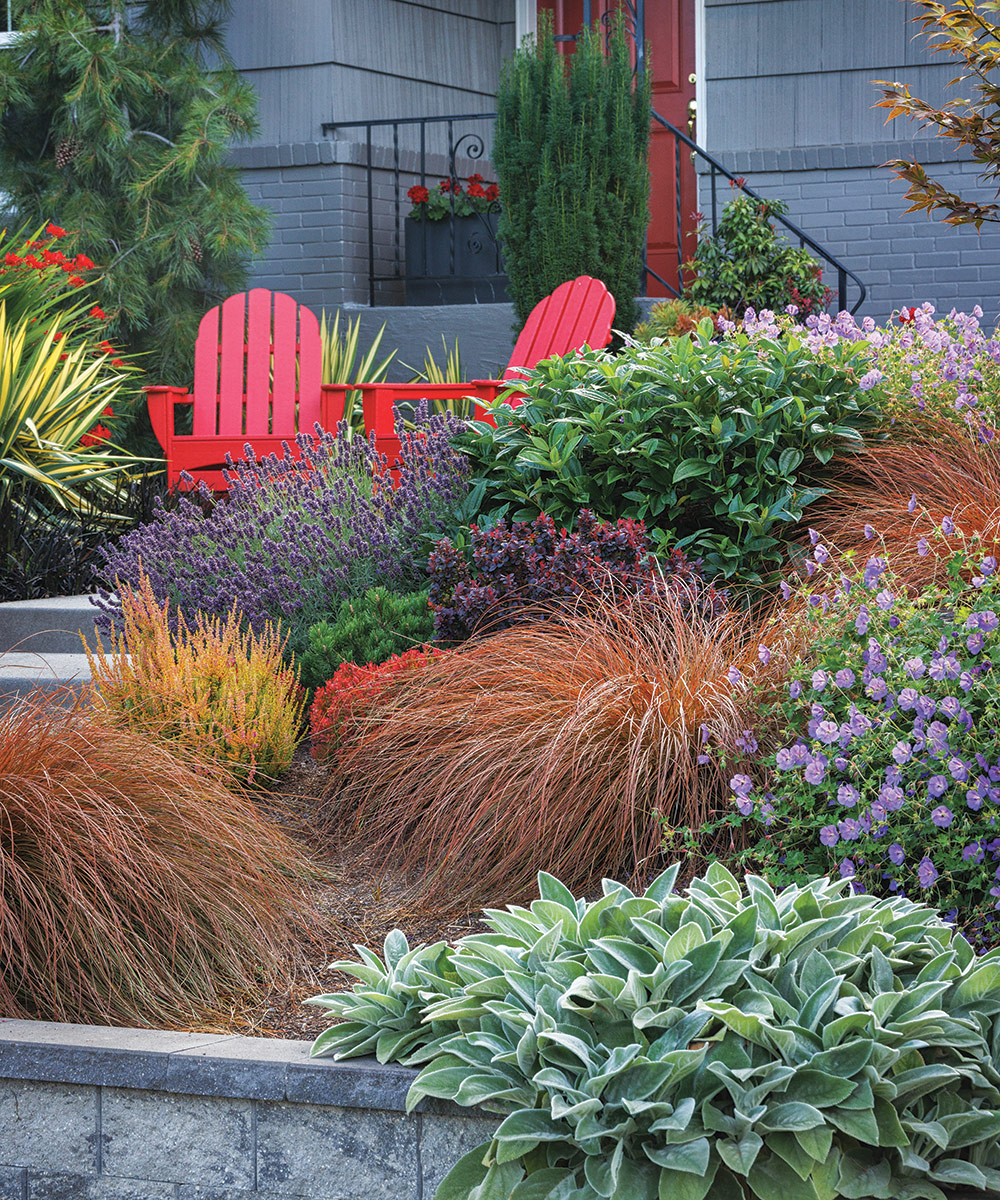
We took a general inventory of the space in both the front and back of the property and determined where individual rooms could be created. I mapped out the proposed spaces to scale on paper to see if the wish list of areas would all fit. Your outdoor rooms need to be interlocked and easy to navigate, like a puzzle. In the case of this cookie-cutter with limited space, we had to plan on certain areas pulling double duty. A front walkway doubles as a seating area for greeting guests, for example (photo above).
One thing that is commonly overlooked in planning a revamp of a cookie-cutter landscape is an examination of what you see beyond your property boundaries. Ask yourself what you might incorporate into your view from a “borrowed landscape.” Your neighbor may have a stunning, large Japanese maple (Acer palmatum cv., Zones 5–9) like the one I enjoy eight months out of the year in my neighbor’s yard. I would never consider planting a tree to block my view of that majestic specimen. The opposite holds true though as well. You may also see a blue tarp over the top of a motor home next door that you want to block from your view. In this case, you need to ensure there is room in the plan for a privacy fence or hedge.

Tip: Use gravel for multiple areas
I like to install 7/8-inch round gravel or larger in between stepping stones and as mulch. These rocks are heavy enough to stay in place if you use a leaf blower for fall cleanup yet small enough to prevent weed intrusion.
Consider topography adjustments and privacy issues
Most cookie-cutter properties aren’t without their share of challenges along with their smaller size. Although the basic lot dimensions might be straightforward, changes in elevation—especially here in Seattle—are common. At this home there was an elevation rise from the street to the bottom of the front door steps of nearly two feet.
To create a more welcoming front entry, we chose to install large concrete pads that were framed and poured in place. Each one is slightly off-center from the other, and each slab gains a few inches in elevation as they climb toward the stoop below the front door (photo below). We wanted it to feel more like a path and not steps, so there is cobble rock in between the slabs. The area to the left at the top of this path became a place for a larger landing with just enough room for two red Adirondack chairs. They are slightly hidden by the surrounding garden but intended to still be seen by the friendly neighborhood walkers. This became the sunset terrace, a modest outdoor living area.
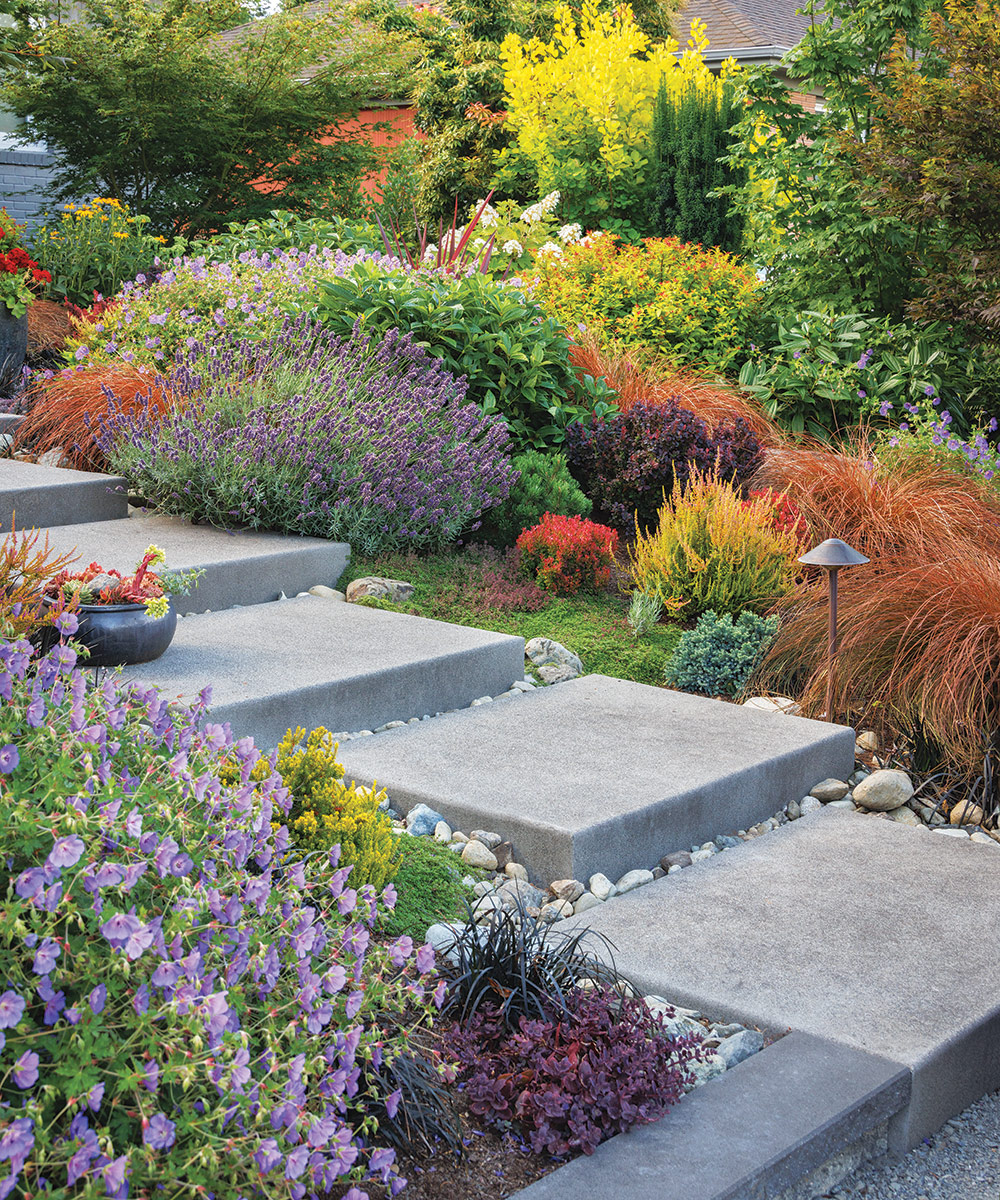
The backyard topography presented a similar challenge. The land from the rear property line to the foundation pitched toward the house again, just over 2 feet. To solve this, we chose to build a deck to meet up with the existing threshold of the doors into the home (photo below). The decking is a sustainable material, a manufactured lumber, which is available in a wide range of costs and colors. This enabled us to turn an awkward, unused slope into a sizable entertainment and dining spot. We brought the deck out to meet the next “room,” which we used for a firepit. The firepit terrace also serves as another entertaining spot. This area is where the elevation really starts to climb toward the back of the property. By using large Pennsylvania bluestone slabs for steps, we were able to mitigate the grade change. The stone slabs double as seats around the firepit.
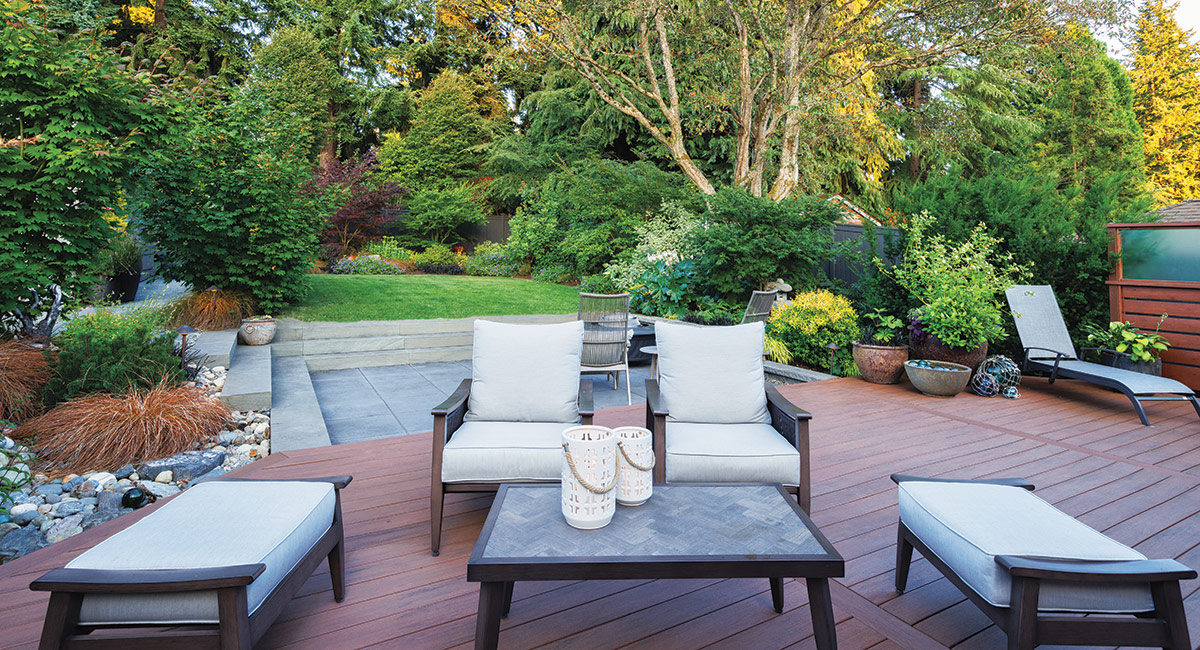
Another challenge for us was that because the houses are so close together on inner-city lots, the new deck for eating and socializing needed to have more privacy. In this case, with not enough room between the properties to grow a tall hedge, it worked to design an attractive cedar panel that divided the
upper deck from the view of the lower neighbor’s backyard. The comment I hear most often about solid panel fences is that they can create a dark shadow with an undesired closed-in feeling. The side of this deck faces south, so most of the summer and winter sun would come from that direction. By inserting a frosted polycarbonate panel at the top one-third of this fence (photo above), we could keep the light we desired without feeling visually boxed in with too much shade. Careful consideration was used when we chose the height and size of this translucent fence panel. The solid wood portion was high enough to block the neighbor’s lights next door that would be on in the evenings, with the whole structure being tall enough to hide the neighboring roofline.
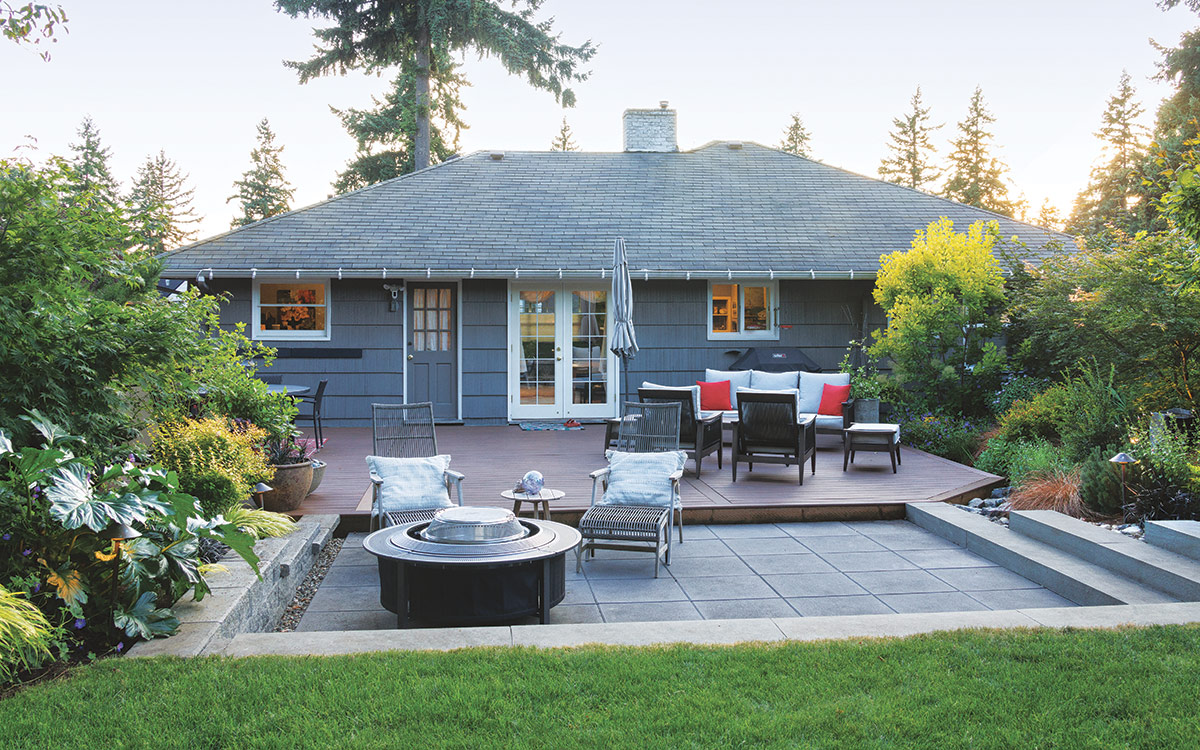
Let your personality and interests drive your plant choices
The homeowner is an artist who enjoys painting birds, so we created a special bird habitat in one portion of the landscape. This included a water feature that attracts winged visitors and provides a soothing sound for people (top left photo). Smaller trees were planted here with low branches for birds to perch. Japanese maples, smoke tree (Cotinus coggygria cv., Zones 4–9), American beautyberry (Callicarpa americana, Zones 6–11), and larger evergreen shrubs were added for nesting purposes. Columnar Irish yew (Taxus baccata ‘Fastigiata’, Zones 6–9) and ‘Mountain Fire’ andromeda (Pieris japonica ‘Mountain Fire’, Zones 5–8) provide screening from the neighbors but also a safe hiding place for the wildlife that frequent the garden. The plants in this area were chosen for the berries and seed heads they produce, which birds feast on all winter long.
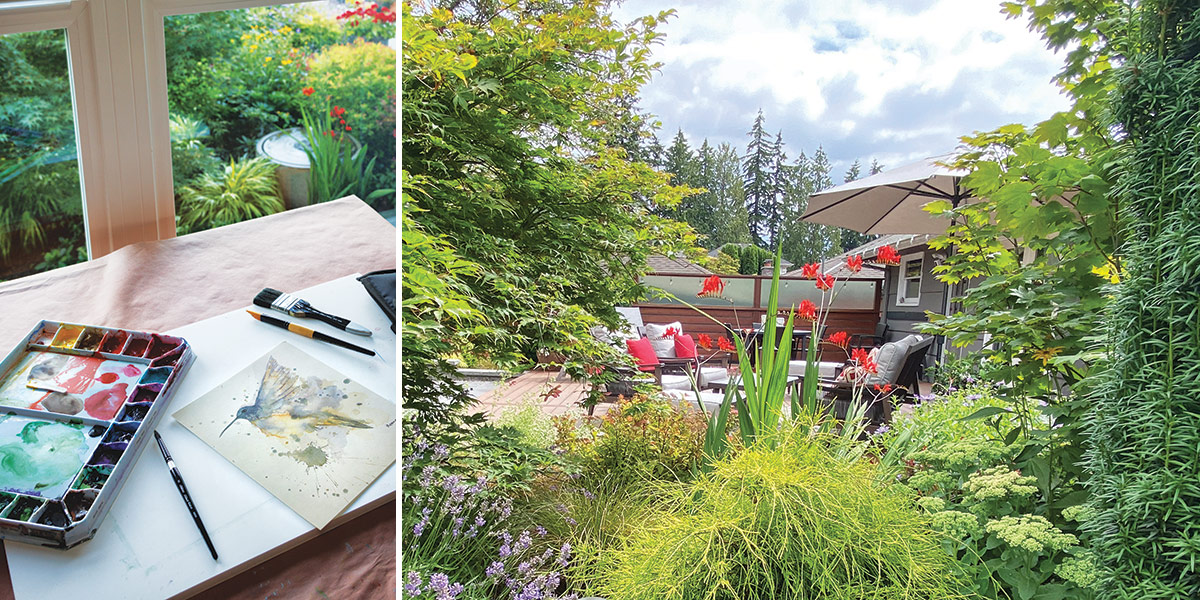
Given the homeowner’s desire for this newly designed space to be wildlife-friendly, the plants selected were mostly native-driven or from regions with similar climatic conditions. The Pacific Northwest has little rain in the summer (but plenty in winter), similar to other international regions like the Mediterranean, Chili, and South Africa. We chose native vine maples (Acer circinatum, Zones 5–9) and the western sword fern (Polystichum munitum, Zones 5–9) for the west-facing front bed and added fun-loving, easy-care plants in between. We anchored these entry gardens with a few Pacific Northwest “native” granite boulders too. Using two-thirds evergreen plant material ensures that there will be plenty of interest and garden coverage throughout each season. We carefully chose a plant color palette that complements the house color, and intentionally incorporated red and burgundy plants to connect the eye to the red front door. The same strong hue is dotted throughout all the garden beds (using not necessarily the same plants but the same color range), which gives the front and back landscapes cohesiveness. This homeowner is an avid gardener who wanted a space she could age with, so we focused on the plant choices being foliage-forward, low-maintenance, and sustainable with low water needs.
By breaking away from the traditional cookie-cutter yard and embracing sustainable practices, this outdoor modern-day landscape created multiple living spaces. We transformed a standard urban lot into the year-round haven this homeowner hoped for. From the inviting front garden with a bird habitat to the versatile backyard deck and lower terrace, every inch of space was carefully planned and built to create an environment that fosters relaxation, connection with nature, and an enhanced quality of life.
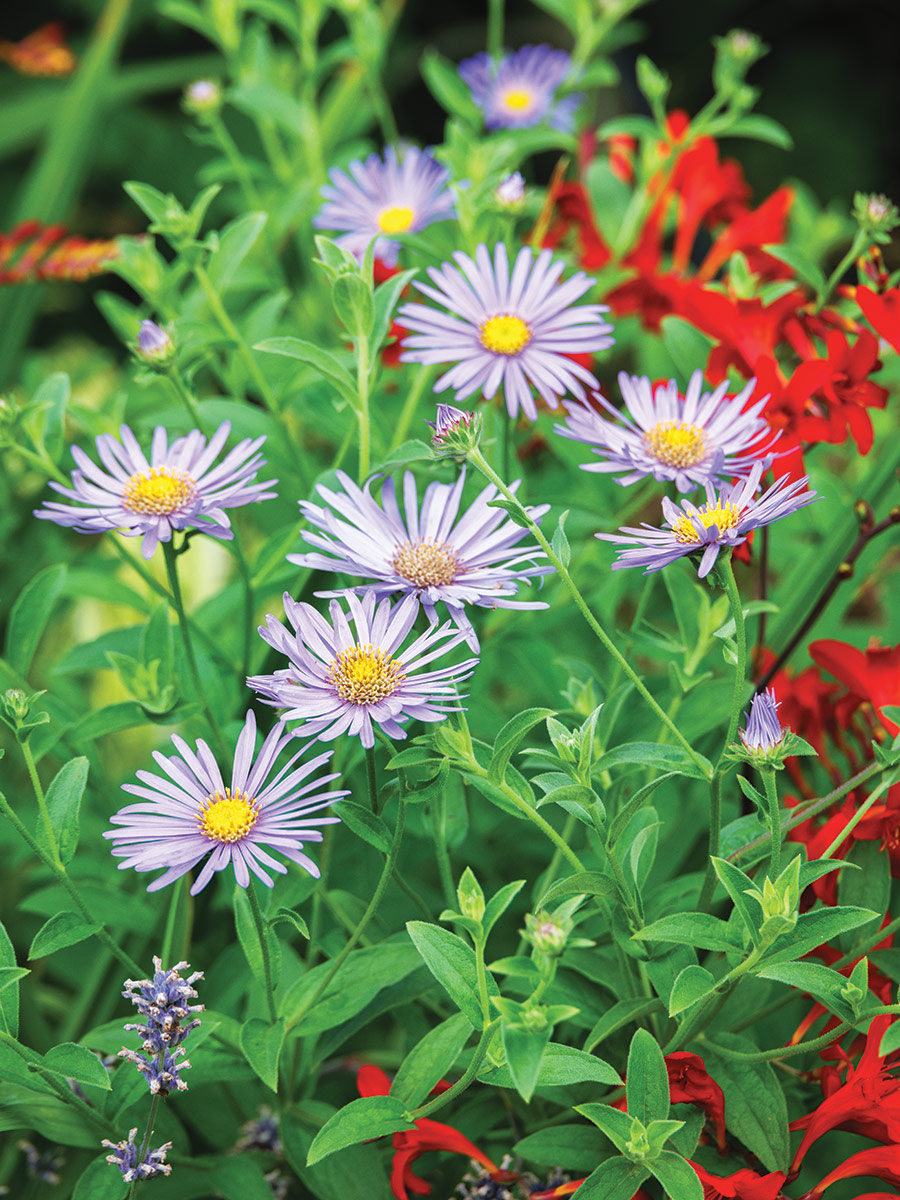
Stacie Crooks is a landscape designer and educator in Edmonds, Washington. She has extensive experience designing in urban neighborhoods.
All photos, unless otherwise noted: DoreenWynja.com
Illustrations: Elara Tanguy
Fine Gardening Recommended Products
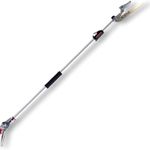
ARS Telescoping Long Reach Pruner
Fine Gardening receives a commission for items purchased through links on this site, including Amazon Associates and other affiliate advertising programs.

DeWalt Variable-Speed Cordless Reciprocating Saw
Fine Gardening receives a commission for items purchased through links on this site, including Amazon Associates and other affiliate advertising programs.
- 18.31 x 6.13 x 4 inches
- 1-1/8-inch stroke length
- Variable speed trigger with 0-3000 spm
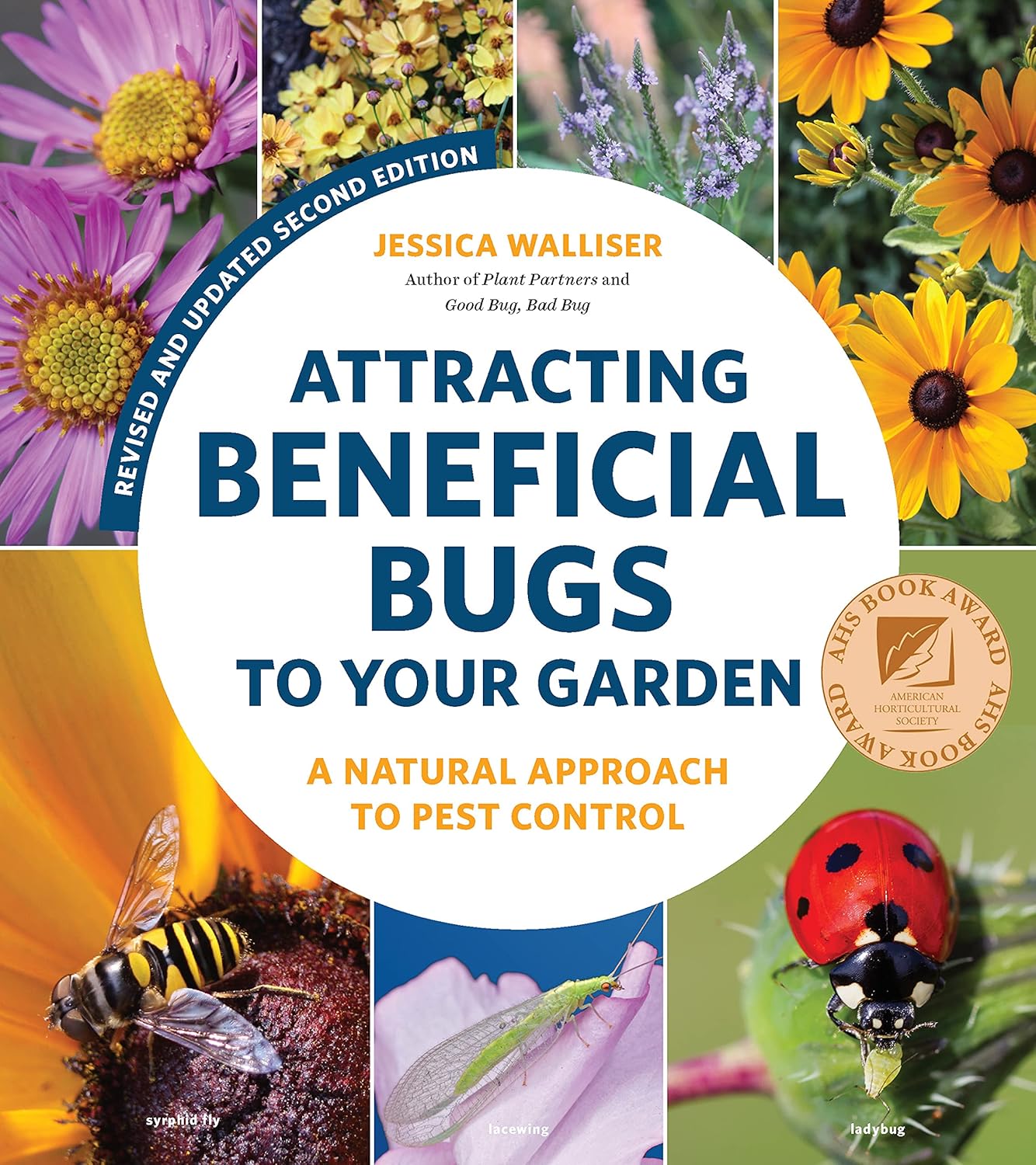
Attracting Beneficial Bugs to Your Garden, Revised and Updated Second Edition: A Natural Approach to Pest Control
Fine Gardening receives a commission for items purchased through links on this site, including Amazon Associates and other affiliate advertising programs.








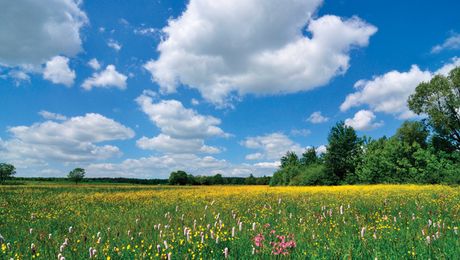
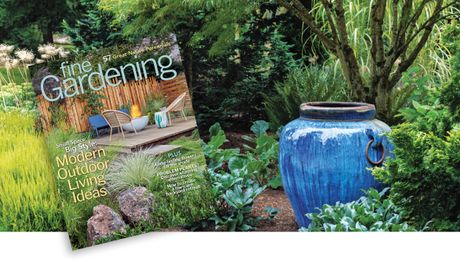










Comments
Log in or create an account to post a comment.
Sign up Log in